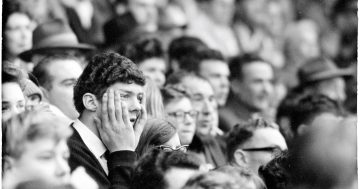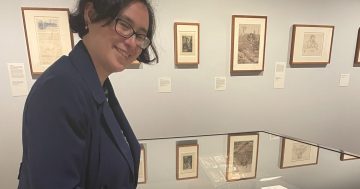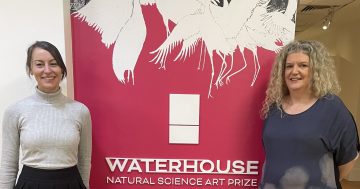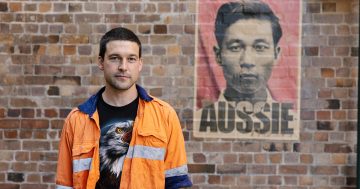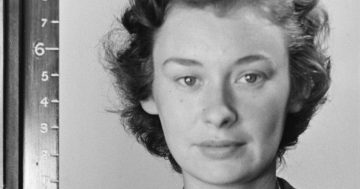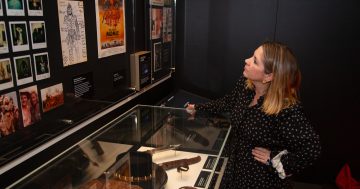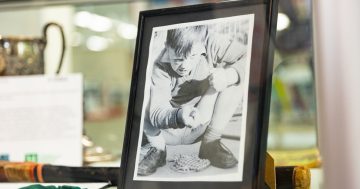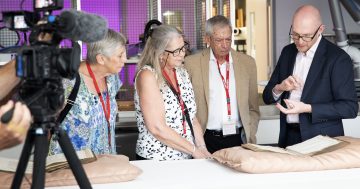
I recently visited the National Archives of Australia where the images of Australians at work, rest, and play permeate through their collections. It was a heart-warming experience I had not been expecting.
I had not been there for a real visit, other than to attend specific events occasionally, for many years. Shame on me! And shame on you if you haven’t checked this out yet either – I will try to enlighten you as to why you should.
What I found there was fascinating, and I caught the passion of the people who worked there as they gave me a guided tour. Elizabeth Masters (Media Officer) gave me good reasons to check out their new collections and re-acquaint myself with the existing exhibitions.
Researcher, Emily Catt guided me enthusiastically around the collections and it is obvious that she really loves what she does! Emily has been delving into the Archives’ collection quite deeply, it seems: “Every year we refresh this permanent exhibition, replacing some exhibits to ensure their ongoing preservation.”
These new items in the National Archives’ Memory of a Nation Exhibition, covered fascinating subject matter, such as Sex Education, Chinese Anzacs, Advance Australia Fair and CWA activism. I was drawn to them all – such interesting topics in and of themselves, but to see where we have been, where we are now, and perhaps getting a sense of where we might be going, is I think the essence of the significance of this institution – a treasure for the nation. And we are privileged to have it on our very own doorstep.
The sex education collection I found particularly fascinating (as I found myself delving into my own store of memories on how poorly this was done in my days at high school). Something about bees and ‘monthly visitors’ if I recall, which made no sense to me at the time. I think I was none the wiser from that program and was left wondering if school programs are any more effective today?
But it all made sense to me as I viewed this interesting collection (which went way back and beyond my own school days, I might add), and it became very clear that preserving the innocence of children was the nucleus of such programs, simply because of the attitudes to sex at that time. Another factor was that concerns about venereal disease (VD) during and after World War 1, meant that many viewed sex education in schools as too explicit. Then again moving on the timeline we had a pamphlet advertising Dr. Philpot’s ‘intimate lectures’ from 1943 – the mind boggles, doesn’t it just?
An interesting point of reflection in comparing attitudes and areas of concern around this delicate topic which affects us all, to today’s concerns, is with regard to the la Trobe University’s release of a report in 2011 on the findings from the first-ever National Survey of Teachers on “Sexuality Education in Australian Secondary Schools”. The very term ‘sexuality’, as distinct from ‘sex education’ says a lot. Apparently, the topics of most concern today are same-sex marriage, sexual abuse and the impact of online communications.
Moving on, another exhibition that grabbed my attention, involved five boys from the Sam family enlisted in World War I, with an Australian mother and a Chinese father, who were seen as ‘sufficiently European’ to serve overseas with the AIF. At the same time, the younger brother, Percy and his father William needed to travel to China and came up against the White Australian policy. They had to apply for a Certificate of Exemption from the notorious dictation test. How interesting!
Emily told me that the Dictation Test is taken by students visiting from schools around the country and she let me know that indeed, most students fail it! What a great experience for the younger generation – indeed, adults could benefit from such hands-on exposure.
Again, where we came from, where we are today, and where we are going is what matters. Have we come very far with the refugee problems today? Let’s not go there now.
There is only so much experiential history than I can convey here right now. You’ll just have to visit – and take your children too!
The NAA website outlines the following: “The National Archives of Australia can best be described as the memory of our nation – collecting and preserving Australian Government records that reflect our history and identity.”
I would venture to suggest that what is most important, is that we need to look back in order to move forward, and learning from our history is an essential element for a brighter future – just tell our politicians!
The exhibition can be seen at the National Archives of Australia, Queen Victoria Terrace, Parkes ACT. 9am to 5pm daily.
Pictured at top: National Archives’ Memory of a Nation Exhibition. Photo supplied by National Archives of Australia.












